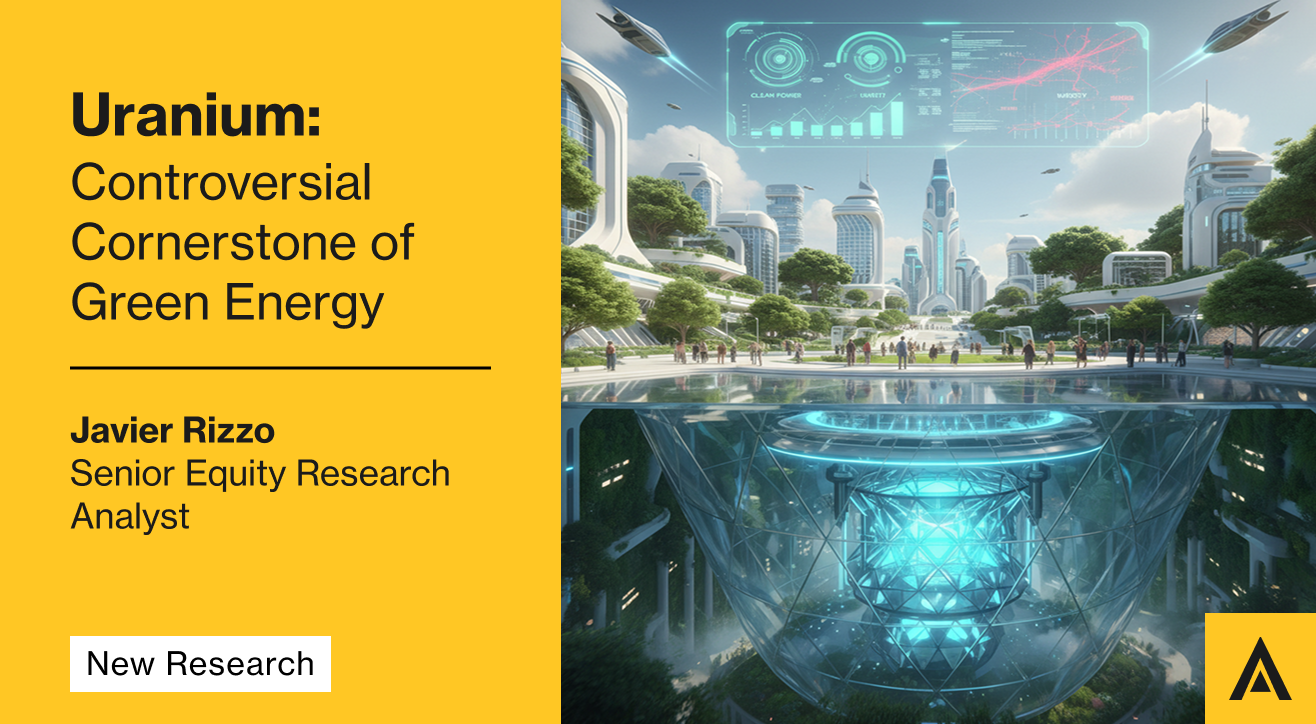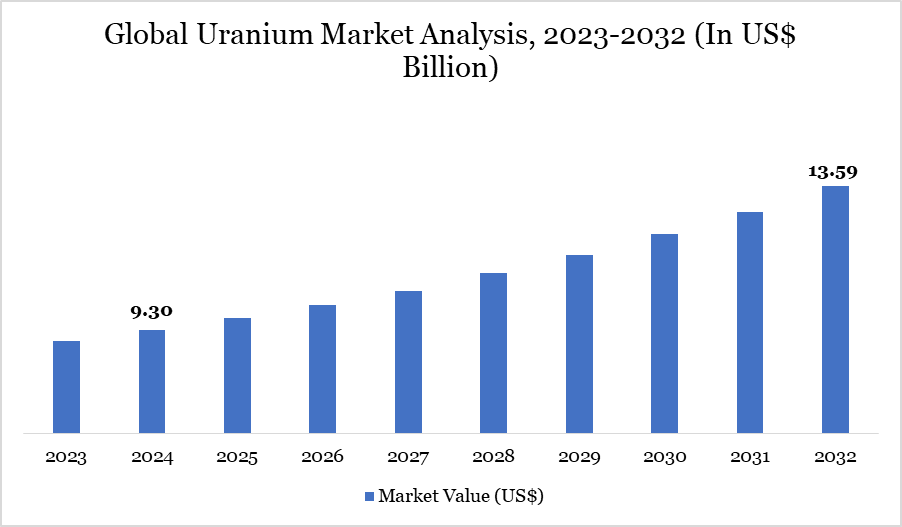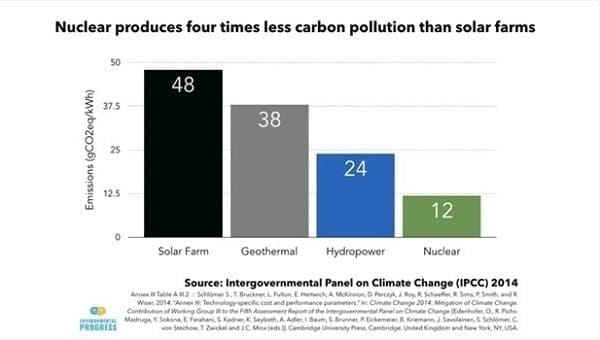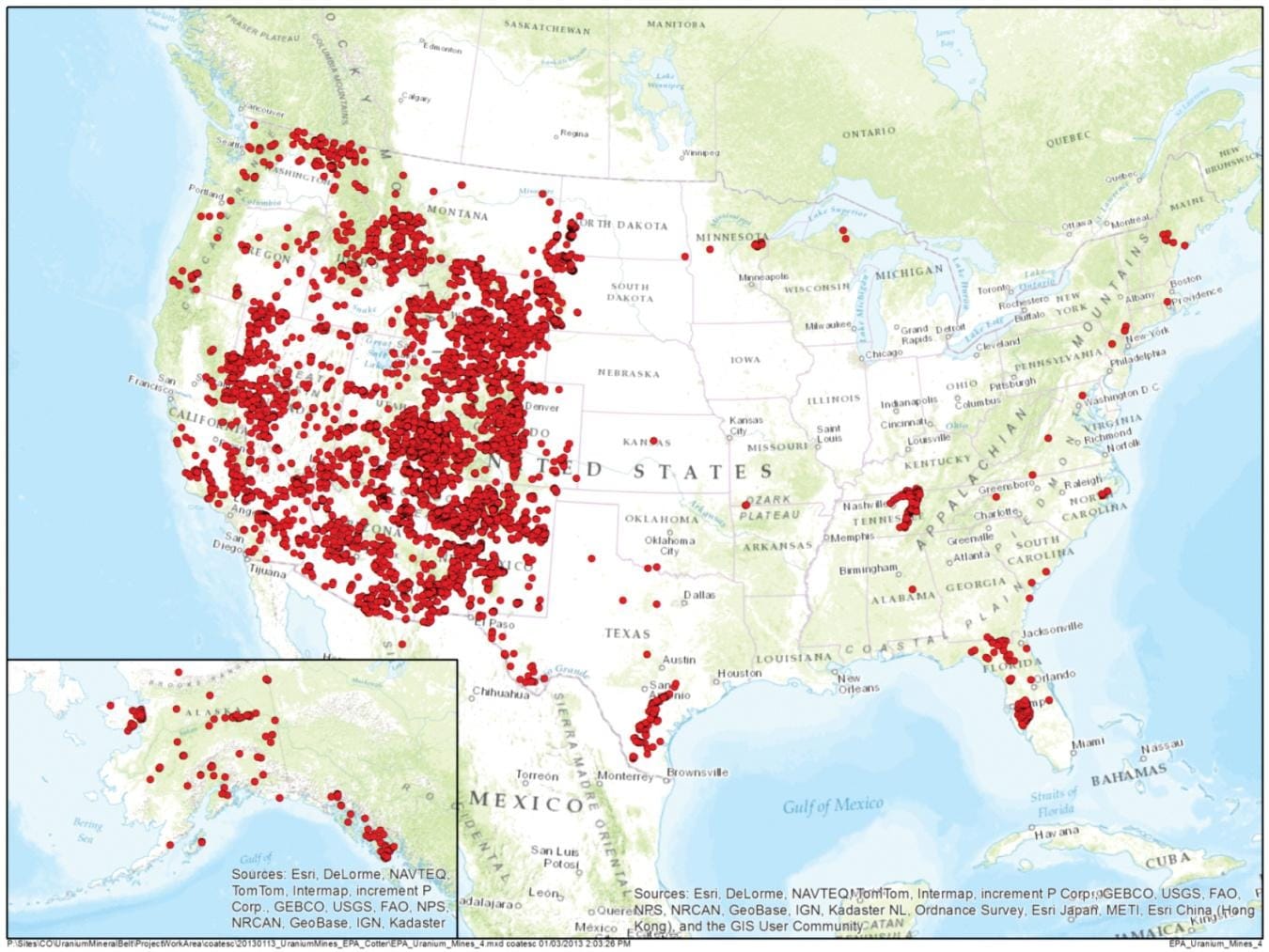Uranium: Controversial Cornerstone of Green Energy

In the urgent quest to decarbonize the global economy, a contentious contender has re-emerged from the shadows: uranium.
The climate imperative is a powerful driver in uranium's rehabilitation. Nuclear energy - proven, scalable, low-carbon electricity with a land footprint a fraction of that required for solar or wind farms - depends on uranium for atomic fission. Nuclear "always-on" baseload power forms the bedrock of a resilient, clean-energy grid as an indispensable partner for intermittent renewables.
Positioned as a cornerstone of green energy, nuclear power offers the promise of vast, reliable, carbon-free electricity. Yet this promise is inextricably linked to a legacy of environmental injustice and a fuel cycle fraught with controversy, creating a profound paradox. It is a technology that was once synonymous with Cold War destruction but is now championed as an essential weapon against the modern threat of climate change, forcing a difficult question: can we harness the atom for a sustainable future without repeating the mistakes of the past?
The green narrative often glosses over the toxic legacy of uranium extraction as well as the unresolved issue of permanent radioactive waste disposal. Thousands of abandoned mines across the Western U.S. continue to leach radioactive and toxic materials, leaving a hazardous inheritance that critics argue must be fully addressed before any "nuclear renaissance" can be ethically justified.

Why Uranium is Back on the Table
The case for nuclear power as a cornerstone of green energy rests on a powerful trifecta: its immense energy density, its unwavering reliability, and its proven track record as a large-scale, low-carbon electricity source. Unlike solar and wind, which capture fleeting energy flows, energy derived from the splitting of uranium-235 atoms provides a concentrated source of power whose fuel is compact and easily stored.
The most compelling attribute of nuclear energy is its ability to provide vast amounts of baseload power—electricity available 24/7, regardless of weather conditions or time of day. In 2024, nuclear reactors worldwide generated a record 2,667 TWh of electricity, accounting for approximately 9% of global electricity needs. This "always-on" capability is crucial for grid stability and positions nuclear energy as the perfect partner for intermittent renewables, forming a resilient and dependable clean energy foundation that can power everything from homes to heavy industry and the growing energy demands of AI and data centers.
Nuclear emits one-quarter as much as Solar

Recognizing this potential, the international community is increasingly behind nuclear power. The resurgence comes decades after the power source fell out of favour in the late 20th century due to a series of high-profile accidents, escalating construction costs, and the unresolved problem of nuclear waste disposal.
At the COP28 climate conference, 25 governments signed a declaration to triple global nuclear capacity by 2050, a goal that has since been endorsed by major energy users like Amazon, Google, and Meta. This commitment is already translating into action, with 70 reactors under construction worldwide as of 2025, the majority in Asia, and several countries, including Bangladesh, Egypt, and Turkey, building their first nuclear plants. This global momentum underscores uranium's role in the future energy mix.
Innovation in reactor design is poised to further bolster nuclear energy's case. A new generation of Small Modular Reactors (SMRs) and advanced reactors cooled by gases or molten salts promises to broaden applications beyond electricity to include high-temperature process heat for industry. These designs aim for enhanced safety and more flexible, cost-effective deployment. Furthermore, scientific research is continually improving the management of the nuclear fuel cycle, with studies exploring advanced ceramic materials for the more durable immobilization of long-lived radioactive waste.
The Immense Environmental Challenges of Uranium
Despite its clean energy credentials, the nuclear fuel cycle is shadowed by a legacy of environmental damage and social injustice that critics argue must be fully addressed. The controversy begins at the very start of the process: uranium mining. The U.S. Environmental Protection Agency states that regardless of the extraction method, the process creates radioactive wastes that can contaminate the environment if not managed properly. In the past, waste rock and mill tailings were used as building materials, creating radon and radiation hazards until the practice was banned in 1978.
This history has left a toxic legacy, particularly on Native American lands. On the Navajo Nation, for example, hundreds of abandoned uranium mines have been linked to water contamination and severe health problems, including elevated lung cancer rates among miners who worked without adequate protection or warning of the risks. The U.S. Bureau of Land Management estimates there are 15,000 abandoned uranium mines on federal lands, with cleanup costs for all abandoned hardrock mines estimated to be around $50 billion—a stark reminder of the long-term economic and environmental costs of past practices.
Abandoned Uranium Mines in U.S.

The other potent symbol of the nuclear debate is the unresolved issue of permanent radioactive waste disposal. While technical solutions like deep geological repositories exist, their implementation has been fraught with political and social challenges. In the United States, the government is responsible for over 90,000 metric tons of spent nuclear fuel from commercial power plants, but has failed to build a permanent geologic repository, resulting in waste being stored at reactor sites across the country and billions of dollars paid in damages to utilities.
The industry has established clear technical pathways for the final disposal of radioactive waste, which is widely agreed to be deep geological disposal in stable rock formations. Countries like Finland are leading the way, with the Onkalo repository—the world's first licensed deep geological repository for spent fuel—expected to begin operations in the mid-2020s. This multi-barrier approach, which combines engineered and natural barriers, is designed to securely isolate waste for the long term, providing a scientifically sound solution to the waste challenge.
The economics of nuclear power also present a significant hurdle. Building new large-scale reactors requires enormous capital investment and often faces long construction times and cost overruns. While innovative financing and the potential for smaller, more standardized SMRs may help, the financial sector still views nuclear projects as high-risk investments. Furthermore, the cleanup of legacy sites from past nuclear activities, such as the U.S. gaseous diffusion plants, faces funding shortfalls of tens of billions of dollars, raising questions about the full lifecycle cost of the technology.
Innovation and the Path Forward
Further boosting the demand for uranium is a wave of technological innovation in nuclear energy focused on enhancing safety, reducing waste, and improving economic viability. Rather than relying solely on traditional large-scale reactors, companies and research consortia worldwide are developing advanced designs that could fundamentally alter the nuclear energy landscape.
Among the most promising advancements are Small Modular Reactors (SMRs) and advanced reactor designs that offer potential solutions to nuclear energy's traditional limitations. SMRs are designed for factory fabrication and assembly on-site, potentially reducing construction timelines and capital costs while enhancing quality control. Their smaller size and passive safety features could allow for deployment in a wider range of locations, including replacement for retired fossil fuel plants or providing power to remote industrial sites and communities.
Russia and China have successfully built and are operating SMRs. Many other countries, including the U.S., UK, Canada, and Japan, are actively developing their own SMR designs. Canada is set to build four SMRs using Canadian technology, with the first one expected to be online in 2030.

Equally revolutionary are molten salt reactors (MSRs), which represent a paradigm shift in reactor design. Unlike conventional reactors that use solid fuel rods and water coolants, MSRs utilize nuclear fuel dissolved in liquid salt, operating at lower pressures and offering inherent safety advantages.
Multiple companies are advancing MSR technology with varying approaches: Terrestrial Energy, Moltex Energy and Transatomic Power to name the largest. Netherlands-based nuclear startup Thorizon is developing a 100-MW molten salt reactor that aims to be fueled by a mixture of long-lived radioactive waste from existing nuclear facilities and thorium, potentially transforming persistent waste into shorter-lived isotopes. These designs demonstrate the diverse innovation occurring in the advanced nuclear sector.
Beyond technical specifications, the success of these emerging technologies hinges on supportive policy frameworks and strategic collaboration. The European Union has recognized the potential of advanced nuclear power, selecting Thorizon's project as a key initiative in its SMR industrial alliance. Similarly, the French government's France 2030 innovation program has provided support, highlighting how public investment and streamlined regulation are essential to bridge from research to commercial deployment. These partnerships between governments, research institutions, and private industry will be critical to secure funding, establish safety standards, and validate new designs.
Weighing the Risks in a Warming World
The debate over uranium's role in our energy future ultimately presents a difficult choice between managing different types of risk. The World Health Organization attributes approximately 7.1 million annual deaths to energy-related air pollution, a toll that accelerated decarbonization could substantially reduce. On the other hand, nuclear energy requires confronting the long-term challenges of radioactive waste management, potential accident risks, and mining impacts that have disproportionately affected Indigenous communities.
The emerging data on material footprints reveal that nuclear energy requires substantially less mining than equivalent solar or wind generation, challenging traditional environmental arguments. Similarly, the historical focus on nuclear accidents often overlooks the statistical reality that nuclear has among the lowest fatality rates per unit of energy produced of any major power source. An evidence-based approach that weighs these comparative risks objectively is essential for rational energy policymaking.
Practical considerations suggest that the most viable path forward may involve strategic diversity rather than exclusive reliance on any single technology. Nuclear energy's reliability complements renewable energy's intermittency, potentially creating a more resilient and decarbonized grid than either could achieve alone. The specific energy mix will understandably vary based on national resources, existing infrastructure, and technical capacity. What remains constant is the need for robust safety regulation, continued technological innovation, and transparent public engagement to build trust and address legitimate concerns.
Uranium remains a controversial yet indispensable component of a comprehensive climate solution.
Companies to Watch
Notably, Constellation Energy (CEG - NASDAQ), the largest nuclear operator in the U.S. by generation capacity, is a pure-play clean energy company.
BWX Technologies (BWXT - NYSE), a leading supplier of nuclear components and fuel to the U.S. government and commercial clients. It is also involved in advanced reactor design, like the Small Modular Reactors (SMRs).
Following developments in the resurgence of nuclear, BITA launched two indexes earlier this year:
BITA Global Uranium and Nuclear Select NTR Index
These indexes track the performance of large publicly traded companies involved in uranium mining and nuclear energy generation, including uranium exploration, uranium refining, nuclear plants construction and equipment production, and nuclear energy generation, respectively.
BITA’s research covers significant developments and players in the industry. BITA's Proprietary Data Team meticulously analyzes revenue streams across cutting-edge areas of all industries. Our 90 investment themes range from finance, technology, sustainability, social impact, food, health, leisure, sports, and culture to full coverage of controversial business involvement.
References
IAEA. What are Molten Salt Reactors?. March 11, 2025. https://www.iaea.org/newscenter/news/what-are-molten-salt-reactors
World Nuclear News. Dutch consortium to develop molten salt reactors. January 9, 2025. https://www.world-nuclear-news.org/articles/dutch-consortium-to-develop-molten-salt-reactors
World Nuclear Association. Molten Salt Reactors. September 10, 2024. https://world-nuclear.org/information-library/current-and-future-generation/molten-salt-reactors
Transatomic. The Science. http://www.transatomicpower.com/the-science/
World Nuclear News. Moltex reactor can consume used fuel, research confirms. October 4, 2024. https://www.world-nuclear-news.org/articles/moltex-reactor-can-consume-used-fuel-research-confirms
Moltex. Our first reactor. https://www.moltexenergy.com/our-first-reactor
Tractebel Engie. Thorizon One molten salt reactor. https://tractebel-engie.com/en/references/thorizon-one-molten-salt-reactor
IAEA. What are Small Modular Reactors (SMRs)?. September 13, 2023. https://www.iaea.org/newscenter/news/what-are-small-modular-reactors-smrs
World Nuclear Association. Small Nuclear Power Reactors. October 22, 2025. https://world-nuclear.org/information-library/nuclear-fuel-cycle/nuclear-power-reactors/small-nuclear-power-reactors
U.S. Department of Energy. Advanced Small Modular Reactors (SMRs). https://www.energy.gov/ne/advanced-small-modular-reactors-smrs
The Equation. US Uranium Mining Legacy Still Harms the Navajo Nation. May 6, 2025. https://blog.ucs.org/chanese-forte/us-uranium-mining-legacy-still-harms-the-navajo-nation
United States Environmental Protection Agency. Abandoned Mines Cleanup. October 20, 2025. https://www.epa.gov/navajo-nation-uranium-cleanup/aum-cleanup
Earth Island Journal. Abandoned Uranium Mines Plague Navajo Nation. May 5, 2015. https://www.earthisland.org/journal/index.php/articles/entry/abandoned_uranium_mines_plague_navajo_nation/?utm_source=google&utm_medium=paid&utm_campaign=tfd_dsa&gad_source=1&gad_campaignid=16254326089&gclid=Cj0KCQjwsPzHBhDCARIsALlWNG3AhQN-Q_NU4Yi4UHKe960wA5a3ZYmYoK75HT1nMCyXnHnoccxJ8jwaAgmTEALw_wcB
Nuclear Newswire. Resurrecting Three Mile Island. April 9, 2025. https://www.ans.org/news/2025-01-24/article-6714/resurrecting-three-mile-island
UNDP. Chernobyl Disaster: Honoring the Past, Building the Future. April 26, 2025. https://www.undp.org/belarus/blog/chernobyl-disaster-honoring-past-building-future
U.S. Government Accountability Office. Nuclear Waste Disposal. https://www.gao.gov/nuclear-waste-disposal
IEA. The Path to a New Era for Nuclear Energy. January 16, 2025. https://www.iea.org/reports/the-path-to-a-new-era-for-nuclear-energy
World Nuclear Association. World Energy Needs and Nuclear Power. January 6, 2025. https://world-nuclear.org/information-library/current-and-future-generation/world-energy-needs-and-nuclear-power
Forbes.com. Nuclear Vs. Renewables: Which Energy Source Wins The Zero-Carbon Race?. February 11, 2025. https://www.forbes.com/sites/dianneplummer/2025/02/11/nuclear-vs-renewables-which-energy-source-wins-the-zero-carbon-race
Forbes.com. Power Play: The Economics Of Nuclear Vs. Renewables. February 12, 2025. https://www.forbes.com/sites/dianneplummer/2025/02/12/power-play-the-economics-of-nuclear-vs-renewables
CarbonCredits.com. When Sustainable Energy Becomes Unsustainable. 2025. https://carboncredits.com/nuclear-education-when-sustainable-energy-becomes-unsustainable-uranium-rescue
Rehm, T. Advanced nuclear energy: the safest and most renewable clean energy. March 2023. https://www.sciencedirect.com/science/article/abs/pii/S2211339822000880
Bird and Bird. Energy Outlook 2025: Nuclear Energy. January 22, 2025. https://www.twobirds.com/en/insights/2025/energy-outlook-2025-nuclear-energy
Money Management. The Nuclear Renaissance is More Than a Uranium Trade. November 11, 2024. https://www.moneymanagement.com.au/knowledge-centre/nuclear-renaissance-more-uranium-trade
DataM Intelligence. Uranium Market Size, Share Analysis, Growth Insights and Forecast 2025-2032. October 27, 2025. https://www.datamintelligence.com/research-report/uranium-market

